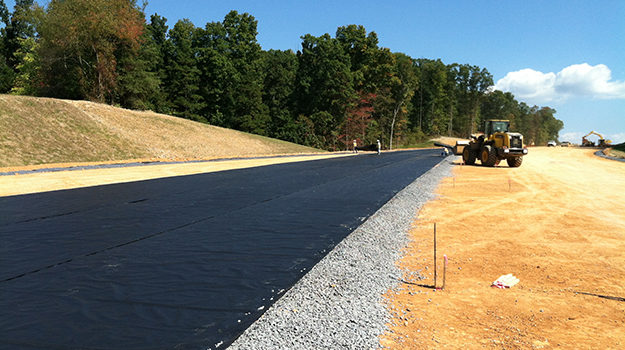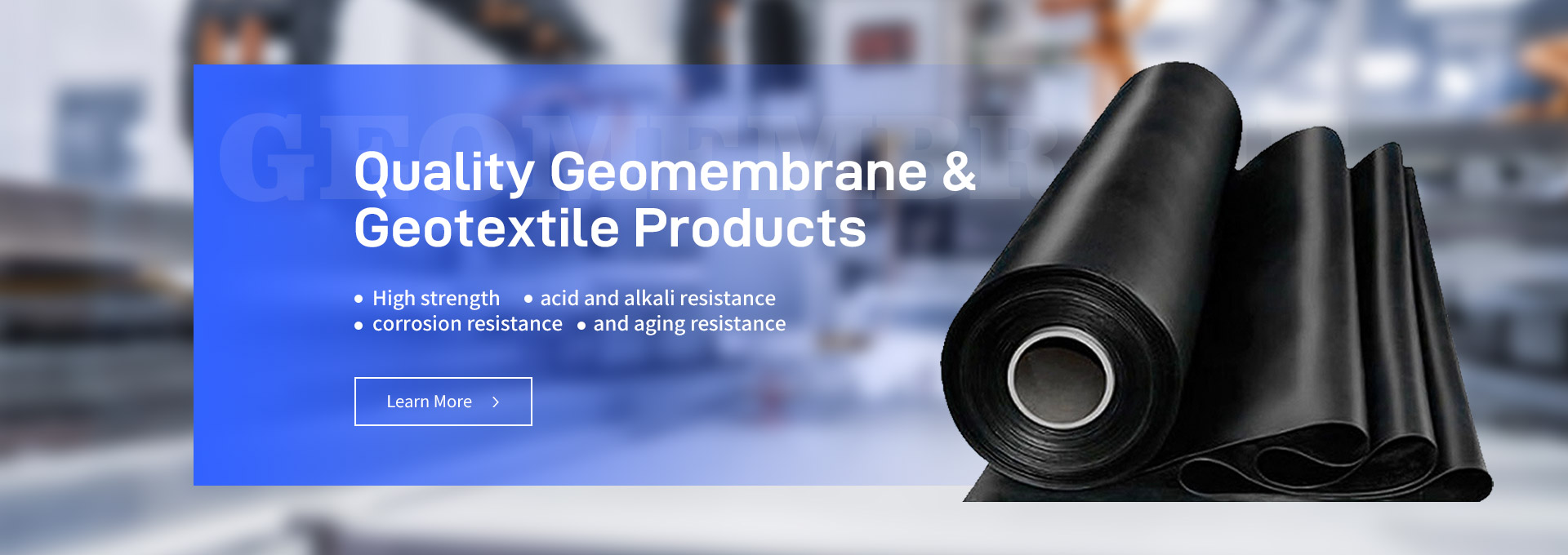In modern road construction, geotextiles have become an indispensable tool for enhancing durability, stability, and cost-effectiveness. These versatile materials are specifically designed to perform a variety of functions, including reinforcement, separation, filtration, drainage, and protection. By acting as a barrier between soil layers, geotextiles contribute to the longevity and structural integrity of roads, particularly in areas with challenging environmental or geotechnical conditions.

What Are Geotextiles?
Geotextiles are synthetic or natural permeable fabrics used in civil engineering projects. Typically made from materials such as polypropylene or polyester, they are designed to manage soil and water interactions in infrastructure applications. Their permeability allows them to act as a filter, enabling water to pass through while retaining soil particles, making them particularly useful in road construction, drainage systems, and erosion control projects.
There are two primary types of geotextiles: woven and non-woven. Woven geotextiles are manufactured by weaving synthetic fibers together to create a strong, high-tensile material, ideal for reinforcement and load-bearing applications. Non-woven geotextiles, on the other hand, are made through bonding processes like needle punching or heat bonding, making them well-suited for filtration and drainage functions.
The Role of Geotextiles in Road Construction
1. Reinforcement
One of the most critical roles of geotextiles in road construction is reinforcement. Roads are subject to heavy loads from traffic, which can lead to deformation and structural failures over time. By distributing these loads more evenly across the underlying soil, geotextiles help prevent excessive settlement and rutting, thereby extending the road’s lifespan.
2. Separation
Geotextiles act as a separator between different layers of materials, such as subsoil and aggregates. This prevents the mixing of fine-grained soils with coarse aggregates, maintaining the integrity of the road’s foundation. Without this separation layer, roads are more prone to instability and reduced performance.
3. Filtration and Drainage
Water infiltration is a significant factor in road deterioration. Geotextiles enable proper drainage by allowing water to pass through while preventing soil erosion. This ensures that the road remains dry and stable, even in areas with high groundwater levels. For instance, geotextile liners can be installed in drainage systems to enhance water management and prevent clogging.
4. Erosion Control
In areas prone to erosion, geotextiles provide an effective barrier to stabilize soil and reduce the effects of wind or water erosion. Their ability to maintain soil integrity is particularly beneficial in road embankments and slopes.
Construction Methods for Geotextiles in Road Projects
To achieve the full potential of geotextiles, proper installation methods must be followed. The construction process generally involves several key steps:
1. Site Preparation
The first step is to clear the site of any debris, vegetation, or large rocks that may interfere with the geotextile’s placement. The soil must also be leveled and compacted to provide a stable base.
2. Material Selection
Choosing the right type of geotextile is critical for the success of the project. Woven geotextiles are typically selected for reinforcement, while non-woven geotextiles are used for filtration and drainage. Consulting reputable geotextile manufacturers can help ensure the selection of high-quality materials that meet project specifications.
3. Installation
The geotextile fabric is carefully unrolled and laid flat on the prepared surface. Overlapping is required at the edges to ensure continuity, with a typical overlap range of 30 to 50 cm. It is crucial to avoid stretching or tearing the fabric during this process.
4. Securing the Geotextile
To keep the geotextile in place, anchoring methods such as pins or weights are used. This prevents displacement during subsequent construction activities, such as the placement of aggregates.
5. Covering and Compaction
Once the geotextile is in place, the next layer of material, such as gravel or soil, is applied. Proper compaction is essential to eliminate air voids and provide a stable foundation for the road surface.
Why Choose Geotextile Liners?
Geotextile liners are specialized products that combine the functions of geotextiles with additional waterproofing capabilities. They are particularly effective in drainage systems where water management is critical, such as underpasses, retaining walls, and culverts. By integrating these liners into road construction, engineers can enhance the overall performance of drainage systems and protect the structural integrity of the road from water damage. When sourced from trusted geotextile manufacturers, these liners ensure long-lasting performance and compliance with environmental regulations.
Case Studies: Successful Applications of Geotextiles
1. Highway Reinforcement
In a recent highway project, geotextiles were used to reinforce the subbase in an area with weak clay soils. The geotextile layer distributed the load more evenly, preventing excessive settlement and reducing maintenance costs over time.
2. Flood-Prone Roads
In flood-prone regions, geotextile liners were integrated into the drainage system to manage water flow effectively. This reduced the risk of road collapse and ensured uninterrupted traffic flow during heavy rains.
3. Erosion Control in Mountain Roads
Geotextiles played a crucial role in stabilizing slopes and preventing erosion in a mountainous road project. By providing a stable barrier, they minimized soil loss and maintained the integrity of the road embankments.
Conclusion
Geotextiles have revolutionized the field of road construction, offering a range of benefits that enhance the performance, durability, and sustainability of infrastructure projects. From reinforcement and separation to filtration and erosion control, these materials address key challenges faced by engineers. The use of geotextile liners and collaboration with trusted geotextile manufacturers further optimizes project outcomes, ensuring that roads remain safe and functional for years to come. As road construction continues to evolve, the role of geotextiles will undoubtedly grow, making them a cornerstone of modern infrastructure development.

